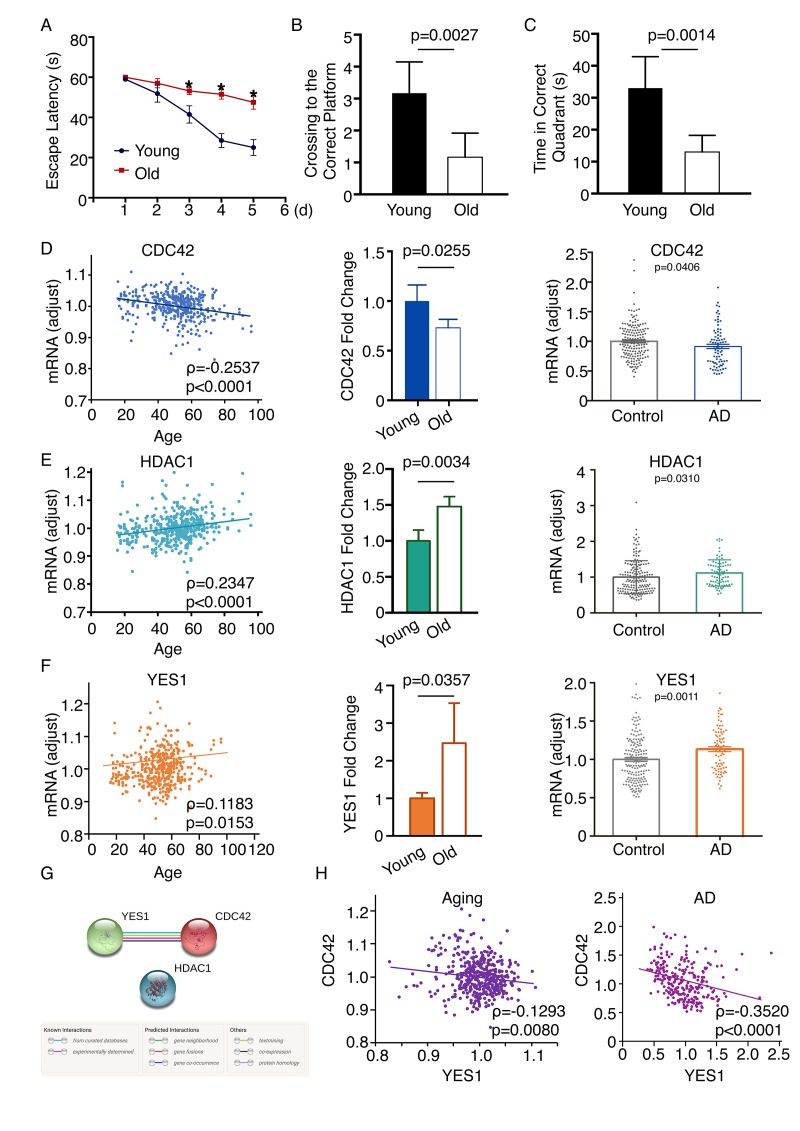Figure 6.
Changes in CDC42, HDAC1 and YES1 mRNA expression in the frontal cortex of an aging mouse model. (A) Escape latency on each day revealed a significant difference between younger and older mice on day 3 (p = 0.0313), day 4 (p = 0.0003), and day 5 (p = 0.0015) (n = 6). The average search errors of the younger and older mice did not differ in the first training trial (p = 0.3409) (n = 6). (B) (C) The numbers of times mice crossed to the correct platform (p = 0.0027) and the times in the correct quadrant (p = 0.0014) differed on the fifth day (n = 6). (D) Expression of CDC42 mRNA was associated with age through screening the GSE71620 dataset (ρ = -0.2537; P < 0.0001). Levels of Cdc42 mRNA were lower in older than younger mice (n = 6, p = 0.0255). Analysis of the GSE48350 dataset revealed levels of CDC42 mRNA are lower in the frontal cortex of people with AD than healthy subjects (p = 0.0406). (E) HDAC1 mRNA expression was associated with age through screening the GSE71620 dataset (ρ = 0.2347, p < 0.0001). Levels of Hdac1 mRNA were higher in older than younger mice (n=6, p = 0.0034). Analyzing the GSE48350 dataset revealed levels of HDAC1 mRNA are higher in the frontal cortices of people with AD than in those of healthy subjects (p = 0.0310). (F) Expression of YES1 mRNA was associated with age through screening the GSE71620 dataset (ρ = 0.1183; p = 0.0153). Levels of Yes1 mRNA were higher in older than younger mice (n = 6, p = 0.0357). Analyzing the GSE48350 dataset revealed levels of YES1 mRNA were higher in the frontal cortices of people with AD than in those of healthy subjects (p = 0.0011). (G) Functional link between YES1 and CDC42 determined using the STRING database to detect protein interactions. (H) YES1 mRNA levels associate with CDC42 in both neural aging and AD, as indicated by screening the GSE71620 (ρ = -0.1293; p = 0.0080) and GSE48350 (ρ = -0.3520; p < 0.0001) datasets.

